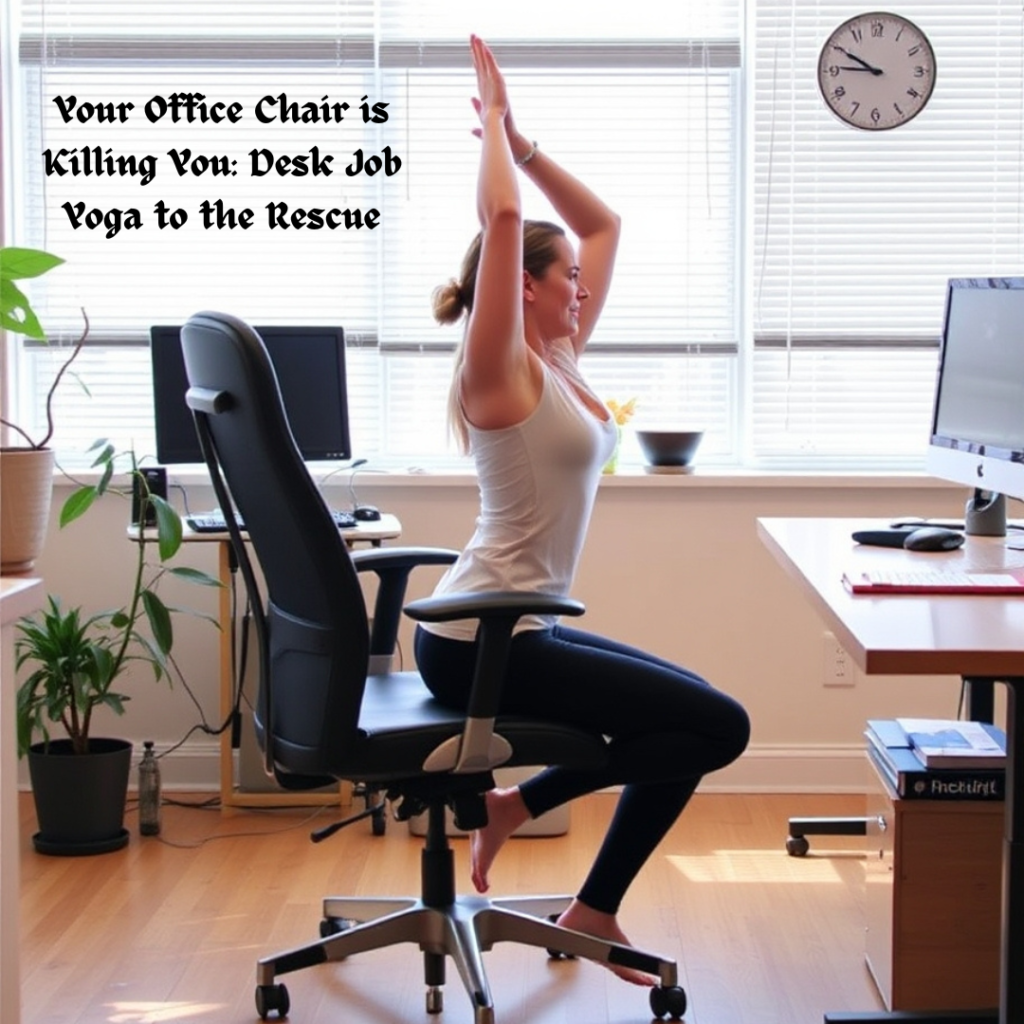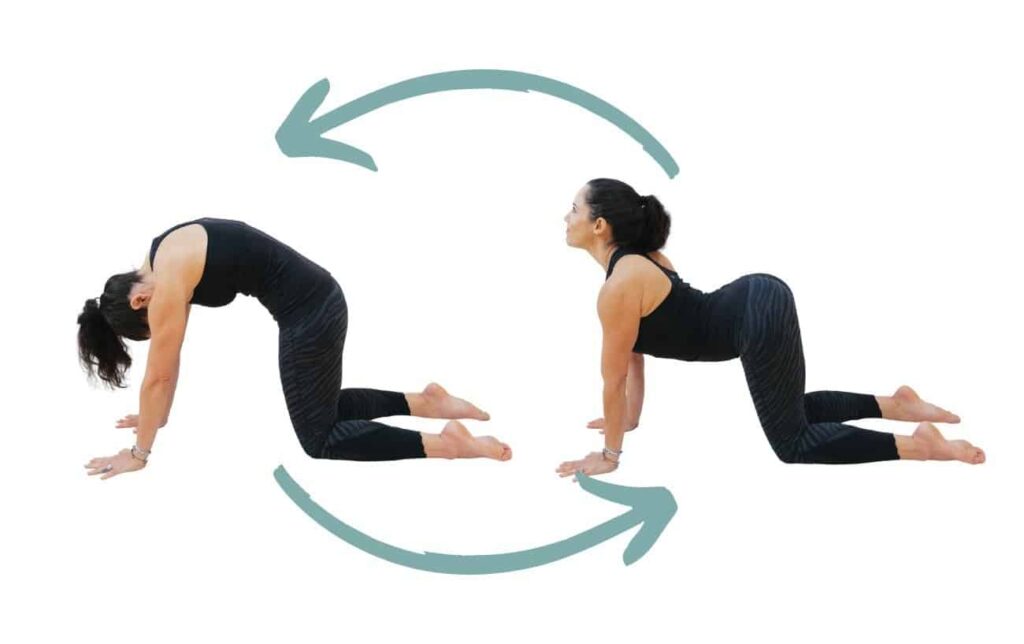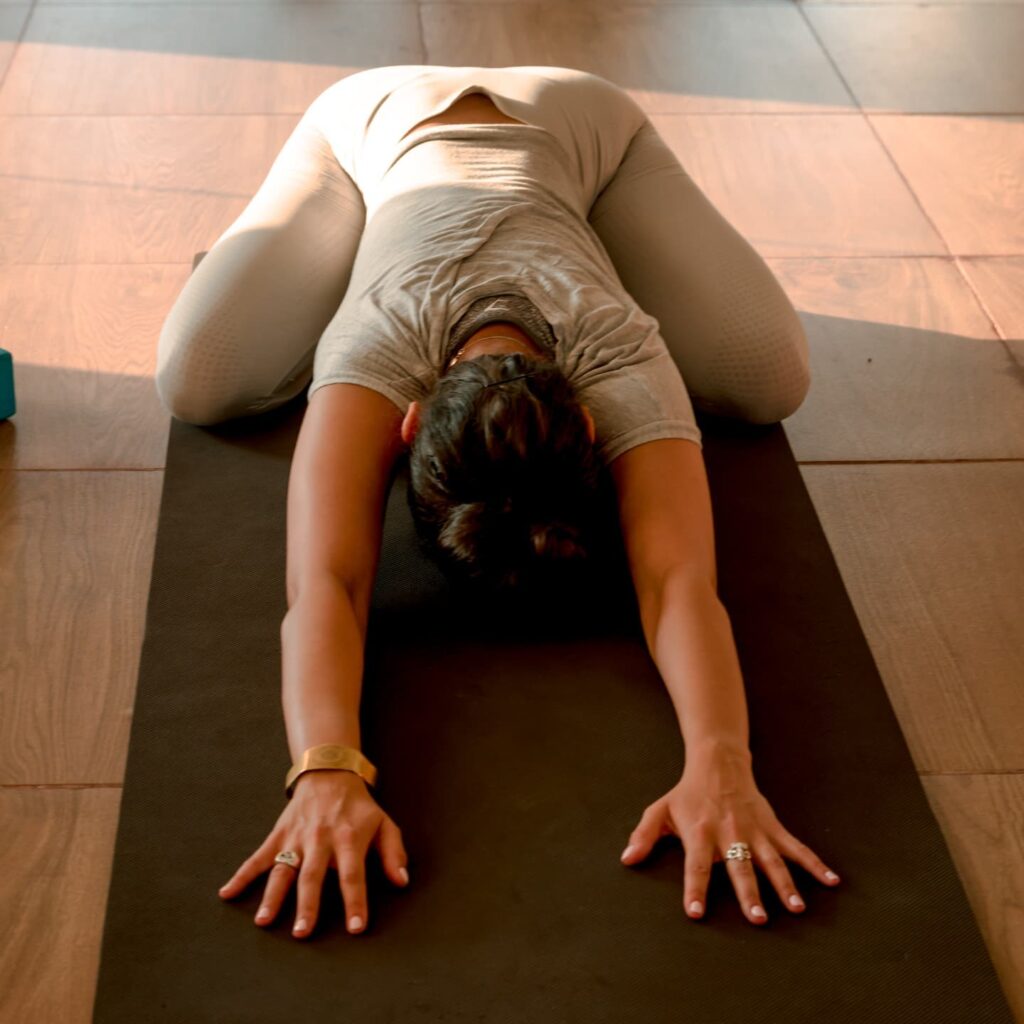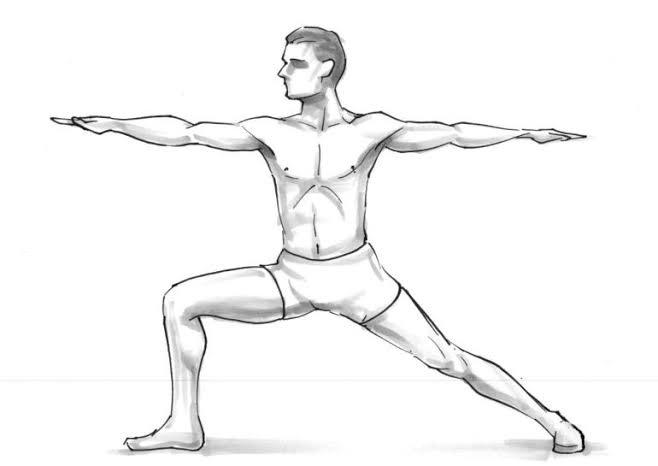
Your Office Chair is Killing You: Desk Job Yoga to the Rescue
Do you get sore and cramped legs, a sore neck, and generally feel tired after sitting all day in the office? You’re not alone. Sedentary behavior is a threat to the health of millions of people all around the globe due to the consequences of sitting for long hours, which brings yoga for desk workers into the picture.
But going to the doctor due to illness, chronic pains, especially in the back, poor employee concentration, and productivity are just a few of the setbacks we endure. But fear not, all you desk warriors! Fortunately, there is a solid remedy to the aforementioned ailments, and that remedy lies much closer to us than we think it does.
Yoga, which seems to be closest to slowly spinning or stretching in two parallel circles far from the working atmosphere and with no desire to work at all, is a very suitable tool for dealing with the problems of sedentary work. It is recommended that people include several natural movements in their daily lives in order to prevent and ease back pain, correct slouching, gain energy and relieve stress.
In this post, let’s discuss the woes associated with sitting, discover how desk job yoga can be life-altering for desk jockeys, and learn a five-minute yoga workout. So spread your rug (or just clear your desk space for the day) and be ready to revolutionize your working week!
The Perils of Prolonged Sitting
Everybody now knows the familiar saying, “Sitting is the new smoking.” Sadly, it has become the new reality for millions of office employees. Sitting in front of the computer screen means sitting in an improper posture for many hours, and this causes various sorts of health problems.
Dangers of Desk Jobs
- Chronic Diseases: Obesity, disorders of the heart, and diabetes are some of the diseases common to those who have poor sitting habits.
- Musculoskeletal Issues: Sitting for long periods will result in back, neck, and shoulder pains that are considered chronic.
- Mental Health: A sedentary lifestyle is known to result in depression, anxiety, and fatigue.
- Reduced Productivity: To the surprise of many, breaks and exercising not only increase break time productivity but the productivity of work time as well.
Physical Manifestations of Prolonged Sitting
This implies that all the outcomes of a sedentary life are expressed through pain and physical discomfort. While the allure of a comfortable office chair is tempting, it can lead to a host of problems.
- Back pain: This is the most frequent report seen in workers who operate at their desks for most of the day. Staying for long hours in front of a desk leads to tremendous pressure on the spine and results in spine stiffness, muscle strain, and even the development of hernia discs.
- Neck Pain: Forcing hours in front of a computer causes the neck muscles to become stiff, which leads to pain and headaches.
- Shoulder Stiffness: Shoulders get tense and stiff due to typing and mousing throughout the day.
- Hip Tightness: Staying in one position for long exposes one to the chances of developing short hip flexors; therefore, it reduces mobility and is uncomfortable.
- Reduced Flexibility: In summary, a sedentary lifestyle is detrimental since it results in reduced joint flexibility of the whole body, making virtually all movement in human society challenging.
Yoga: A Panacea for Desk Warriors
As such, the practice of yoga is holistic and can assist desk workers with overcoming the physical and mental obstacles they experience. Regular desk job yoga practice can provide you with a number of advantages, such as the following:
- Improved Flexibility and Strength: Yoga for desk workers is a great way to strengthen their core and stretch out tense muscles, which is especially helpful when battling the stiffness that comes with extended sitting.
- Enhanced Posture and Alignment: These involve imbalances and instabilities in the spinal column’s structure, which can be adjusted to eliminate discomfort and aches with occasional practice.
- Stress Reduction and Mental Clarity: Yoga incorporates techniques for calming the mind, such as meditation and breath awareness, which are beneficial for lowering stress levels, increasing focus, and elevating mood.
- Increased Energy Levels: Despite popular belief, practicing yoga increases circulation, which gives many people the impression that their energy levels have increased rather than decreased.
Yoga for desk workers is incredibly inclusive because it can be practiced and beneficially accessed by people of all ages, fitness levels, and abilities. No matter how experienced you are, there are a lot of positions that may be filled in addition to beginner-friendly adjustments.
Essential Yoga Poses for Desk Warriors
Alright? It is time to take a look at some friendly desk job yoga poses that will do your body a lot of good if you spend the better part of your day seated at work. Please bear in mind that, though it is important not to let your guard down and stop exercising, it is equally important to heed the signals your body gives.
Warm-up
This may not be a physically exhaustive workout, but it is suggested that you stretch before you start to exercise. You can complete some flexing of the arms and legs, rolling of the neck, and many other activities that enhance the flow of blood in the body.
Key Poses
Cat-Cow Pose (Marjaryasana/Bitilasana)

This desk job yoga pose entails an oscillation movement that is performed on the spine region of the body. First, get on the floor with your hands and knees, round your spine like a coked cat, and then flatten your abs like a joyful cow. This is good for winding the spinal cord, which enhances flexibility and relieves tension on the muscles.
Downward-Facing Dog (Adho Mukha Svanasana)

Taking a shape like an inverted ‘V’, this exercise stretches the hamstrings, calves, and shoulders while toning the arms, legs, and abs. It also helps to correct the spine position and increase blood flow to all the body tissues.
Child’s Pose (Balasana)

A resting yoga for desk workers is one where the person kneels on the floor, leans back on the heels, and folds the upper body forward. Child’s Pose is rather calming and can be effective in stretching the areas of the lower back, hips, and thighs. It also contributes to having a focused and still mind.
Warrior II (Virabhadrasana II)

In Warrior II, you are to stand on your two feet with one foot placed perpendicular to the mat and the other foot parallel to the first and slightly turned inward. The pose helps in strengthening the legs, maintaining balance, and opening up the hips. It also has the effect of stretching the chest as well as the shoulders’ muscles.
Triangle Pose (Trikonasana)

For this desk job yoga pose, with feet spread wide apart, raise your arms to the sides and forward, and slide your hands down them to your front foot. This posture is particularly beneficial because it increases the flexibility of the spine, hips, and hamstrings and strengthens the legs and core muscles.
Seated Twist (Supta Matsyendrasana)

For the second movement of this yoga for desk workers, one should sit on the floor with the back straight and bend sideways. Try to touch the opposite knee with the shoulder. This asana is useful in enhancing the general flexibility of the spine, easing backache, and aiding digestion.
Bridge Pose (Setu Bandhasana)

Sit on the edge of the chair and slowly slide off the chair so you end up lying on your back with your buttocks off the chair, leaning on the arm rests, bending your knees, and placing your feet flat on the floor. Exhale as you raise your hips towards the ceiling, making yourself into a table. Bridge Pose contributes to the building up of the back, glutes, and hamstrings and aids in stretching the chest and shoulders too.
Corpse Pose (Savasana)

Starting in a supine position with the eyes closed makes all the muscles in the body effortless and helps release all tension. The corpse pose is the final pose, which requires lying down flat on the back still as a corpse. It is used to relax the muscles of the body and slow down the breathing rate and heart rate, hence leading to relaxation, stress relief, and a regain of strength.
Creating a Quick Yoga Routine for Desk Warriors
Inclusion of exercise in the daily schedule requires time management, thus implying the importance of regular exercise. You might be now thinking, “I do not even have the time to get my lunch today, not to speak of doing desk job yoga.” But that is alright; every little begins, and building some routine helps. About 10–15 minutes of yoga for desk workers should be done daily, perhaps early in the morning, at lunchtime, or before retiring to bed.
Sample Desk Job Yoga Routine
- Warm-up: Start with several warm-up exercises, including rotating the arms, rolling the neck, and swaying the legs.
- Cat-Cow Pose: Then turn to flow between these two poses for a couple of circles to keep the spine warmer.
- Downward-Facing Dog: Breathe for about 5–10 seconds and try to extend the spine while at the same time rounding the shoulders.
- Child’s Pose: Stay here for a couple of breaths to ease the tension in the lower area of the back.
- Warrior II: Stay on each side for 5–10 breaths, breathe, find the connection through your soles, and extend your spine from the tailbone to the crown of your head.
- Triangle Pose: This should be held for 5 to 10 breaths, holding each side, and you will feel a stretch on your sides and legs.
- Seated Twist: Sustain the arch for 5–10 breaths while trying to twist as deep as possible in the spine area.
- Bridge Pose: Wait for 5–10 breaths when you are pushing the hip joints away from the ribcage and expanding the lungs.
- Corpse Pose: Lie in Savasana for 5–10 minutes, so you can regain the physical strength you need to get up.
Remember: The above-given is an example of the routine that can be followed. You can reduce it depending on the time factor and the level of your fitness. Always pay attention to your body; do not force yourself into some position or stay in a position for too long.
Tips for success
- Create a dedicated yoga space. Minimizing a space in one’s bedroom can be sufficient to create a usable training area, regardless of its size.
- Incorporate yoga into your daily routine. a working schedule, and be sure to keep it.
- Stay motivated: Seek out the type of yoga that you may find interesting, or find a tutor that you may like. Hence, consider using a yoga app or online classes to mix it up.
- Be patient. Progress takes time. Even if you do not see a shift in results right away, do not lose hope.
When you integrate yoga into your daily regimen, you will find that not only your physical health but also your psychological state will be better. Thus, unroll your own mat and begin to gain this ageless health boost.
Conclusion
Thus, by practicing yoga as part of your daily activities, you will be taking a positive attitude toward regaining your health. It can reduce the pain that is likely to be caused by prolonged sitting, correct your posture, and even give you energy in the process. It is to be noted here that any amount of yoga practice can help; it can start with as little as 10 minutes for beginners.
So, why not try? Put on your comfortable outfit, lie down on your yoga mat, and take a chance for a more relaxed and healthier life. Not only that, but your body and mind will be grateful.
Are you willing to begin your yoga practice? Start with gentle movements and then gradually progress to others that are more complex as the muscles and joints get used to the routine. Remember, consistency is key. If you stick to the two and work hard, the results will begin to feel like a new, much-improved version of yourself.
Get in Touch :
Yoga Teacher Training in Rishikesh
200 Hour Yoga Teacher Training in Rishikesh